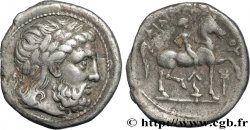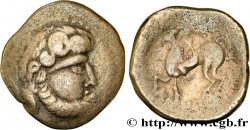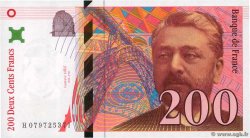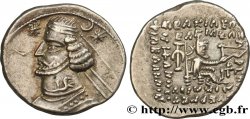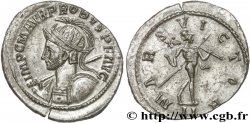v32_0960 - DANUBIAN CELTS - IMITATIONS OF THE TETRADRACHMS OF PHILIP II AND HIS SUCCESSORS Tétradrachme “au rameau”
MONNAIES 32 (2007)
Starting price : 480.00 €
Estimate : 750.00 €
unsold lot
Starting price : 480.00 €
Estimate : 750.00 €
unsold lot
Type : Tétradrachme “au rameau”
Date: (IIe-Ier siècles avant J.-C.)
Metal : silver
Diameter : 24,2 mm
Orientation dies : 5 h.
Weight : 13,17 g.
Rarity : R2
Coments on the condition:
Très agréable monnaie, avec un droit particulièrement centré et complet. Revers complet avec un léger frai et un important coup de burin qui oblitère le champ transversalement. Patine sombre de collection ancienne
Catalogue references :
Predigree :
Cette monnaie provient d’une collection américaine du début du XXe siècle
Obverse
Obverse legend : ANÉPIGRAPHE.
Obverse description : Tête laurée de Zeus à droite ; grènetis.
Reverse
Reverse description : Cavalier au pas à droite, tenant une palme de la main droite ; le cheval lève l'antérieur à droite ; au-dessus du cavalier, la légende.
Reverse legend : FILIP
Commentary
Si le statère d’or de Philippe II de Macédoine a servi de prototype à de nombreuses imitations gauloises, le tétradrachme n’a pas été imité en Gaule, mais reste principal sujet d’inspiration des monnaies pour les Celtes du Danube (LT. 9697-9767, 9768-9832, 9618-9630, 9870-9886). Les premières imitations furent frappées dans le premier quart du IIIe siècle avant J.-C. La fabrication des copies serviles, puis des imitations, enfin des frappes celtiques continuèrent pendant plus de deux siècles.
Cet exemplaire se caractérise par l’absence de motif sous ou devant le cheval et par une légende courte.
Cet exemplaire se caractérise par l’absence de motif sous ou devant le cheval et par une légende courte.







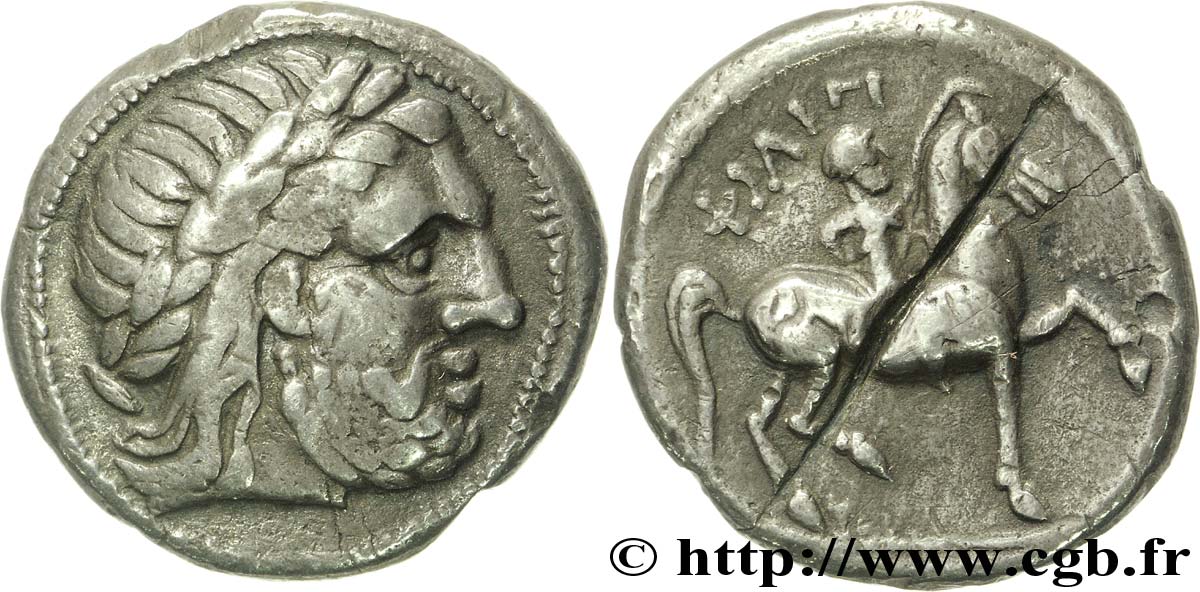
 Report a mistake
Report a mistake Print the page
Print the page Share my selection
Share my selection Ask a question
Ask a question Consign / sell
Consign / sell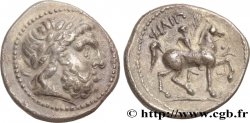
 Full data
Full data